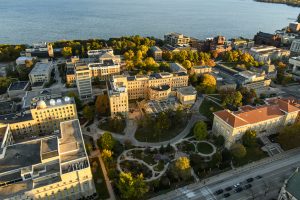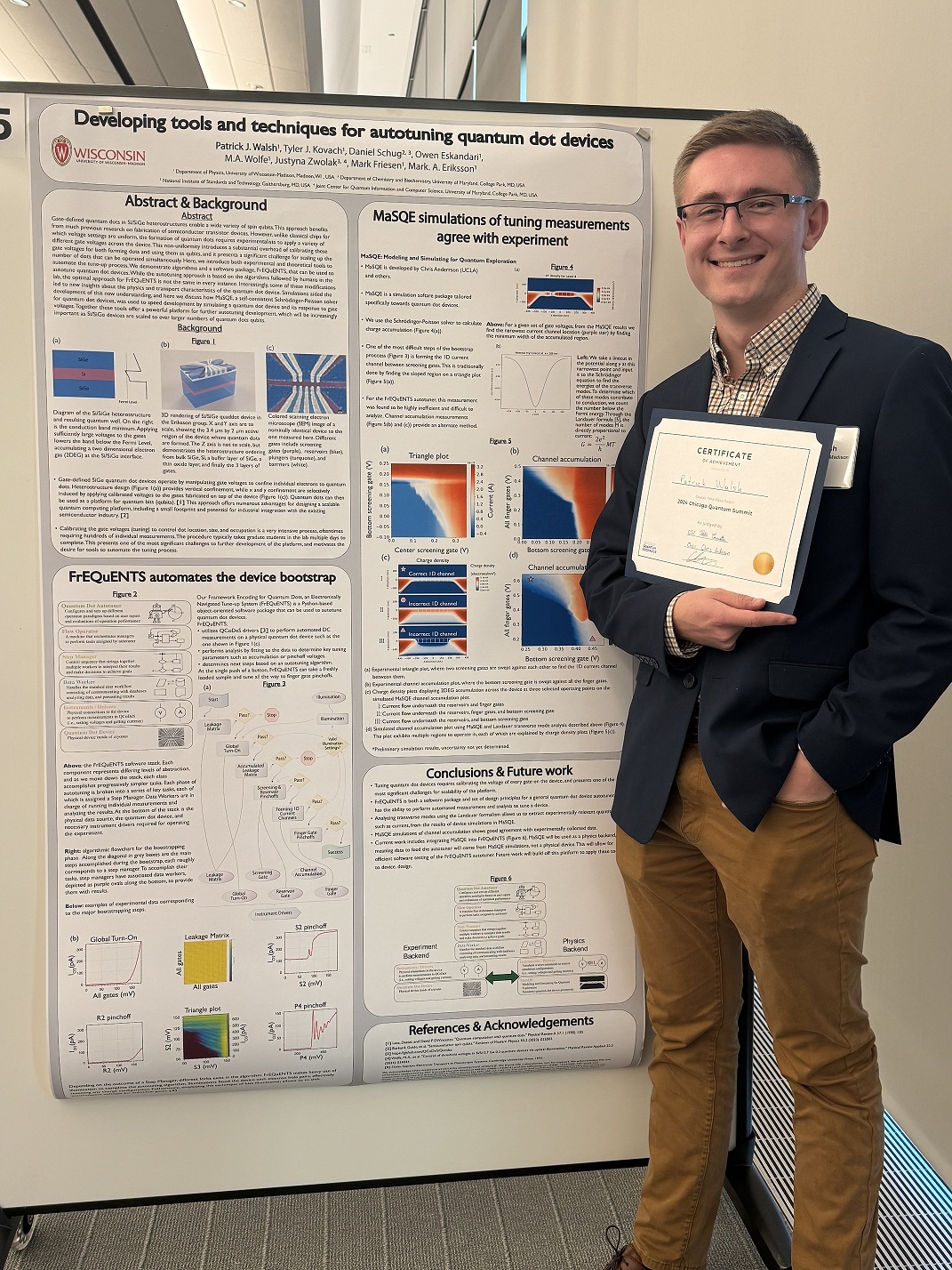Uncategorized
Wisconsin Summer School for Quantum Science – Application is now open!

Application is now open for the 2025 Wisconsin Summer School for Quantum Science!
This summer school will take place on May 28-30 and aims to promote quantum science (quantum materials, quantum information, and quantum sensing) to senior undergraduate students and junior graduate students interested in pursuing a PhD in this research area.
Advancing quantum systems through Q-NEXT’s Materials and Integration thrust
Randall Goldsmith advances photonics for quantum technologies
Congratulations to Mikhail Kats for receiving a PECASE award!
Open Quantum Initiative (OQI) Undergraduate Fellowships are now open!
The Open Quantum Initiative (OQI) Undergraduate Fellowship provides undergraduate students with research experiences working in quantum science laboratories and research groups. OQI fellows spend 10 weeks over the summer working in person with research groups on challenging quantum information science and engineering (QISE) projects. Fellows are given on-campus housing at their institution, a stipend of $6,000, and travel to/from the program. Research experiences occur at the University of Chicago, Argonne National Laboratory, the University of Illinois Urbana-Champaign, the University of Wisconsin–Madison, Northwestern University, and The Ohio State University. No research experience is required. Students enrolled in any undergraduate institution in the United States, including community colleges, are eligible.
Applications for the 2025 OQI Undergraduate Fellowship cohort are open until February 6, 2025.
More information is available by emailing oqi@uchicago.edu or by visiting the OQI website. Interested students, faculty, and staff can also register for online application information sessions, which will include tips on how to craft a strong application.
Congratulations to Patrick Walsh for winning 3rd place at the Chicago Quantum Summit poster session!

Patrick Walsh won 3rd place at the Chicago Quantum Summit poster session. The title of his poster was: Developing tools and techniques for autotuning quantum dot devices.
The seventh annual Chicago Quantum Summit took place on October 21 and 22 and featured dialogue about the growing quantum technology economy, new research initiatives in the field, and efforts to build the quantum workforce.
Members of the CQE community were invited to submit a poster on any quantum information science and engineering topic. Students and postdocs were particularly encouraged to apply.
Several students from UW-Madison took part in the poster session and attended the meeting on October 21.
Britton Plourde elected Fellow of the American Physical Society
Congratulations to Prof. Britton Plourde for being elected a Fellow of the American Physical Society! Plourde was elected “For important contributions to the physics and operation of superconducting qubits, including the development of techniques for …
Read the full article at: https://www.physics.wisc.edu/2024/10/04/britton-plourde-elected-fellow-of-the-american-physical-society/Join the Qiskit Fall Fest – 2024
Embark on an exhilarating journey into quantum computing with us at the Qiskit Fall Fest! Whether you’re already a quantum wizard or just starting to explore this cutting-edge field, you’re in for an incredible learning experience.
Read the full article at: https://wqi.wisc.edu/wqcc/qiskit-fall-fest-2024/DARPA Researchers Highlight Application Areas for Quantum Computing
This post is modified from one originally published by DARPA Amid efforts to explore quantum computers’ transformative potential, one foundational element remains missing from the discussion about quantum: What are the benchmarks that predict whether …
Read the full article at: https://www.physics.wisc.edu/2024/06/24/darpa-researchers-highlight-application-areas-for-quantum-computing/